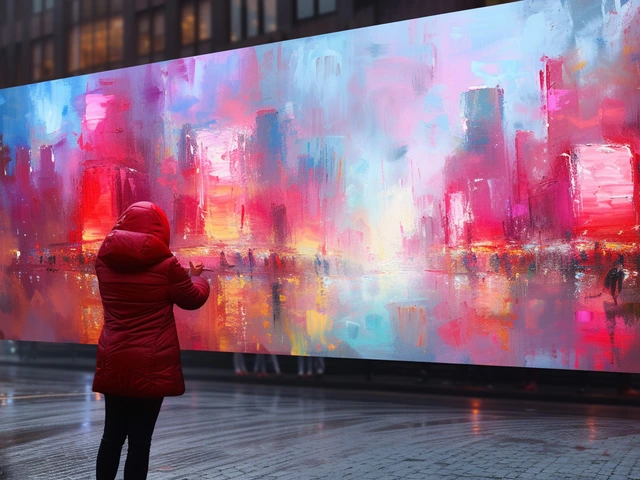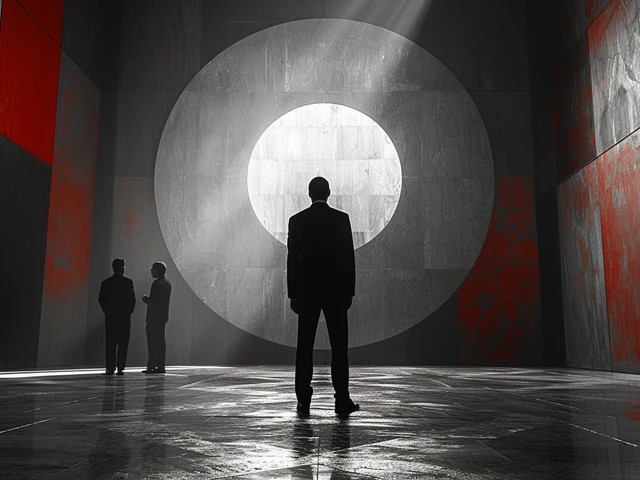The Gothic Wave: Redirecting Our Perception of Art
You know, there's an enchanting allure that steeps Gothic art. A charm, if you may say, that harkens from a time unbound by the sterility of modern design and immersed in the shadows of mystery, the supernatural, and morbid beauty. When I speak of Gothic art, many mistakenly imagine tall cathedral spires piercing the heavens or intricate vestiges of medieval tapestry. Though it's true - these indeed form the bedrock of Gothic tradition, the magic truly unfurls when we speak of its subtle but indelible influence on literature and film.
As Oliver Barnet, a Brisbane-based art enthusiast, I am intrigued and fascinated by the labyrinthine webs that lie at the heart of Gothic philosophy. And today, I invite you to journey with me into this world of shadows and mysteries. Let's traverse through Gothic torrents, where spectral beings waltz in dimly lit chambers and sorrow and happiness become inseparable twins.
Of Castles and Vampires: Interweaving Gothic Themes into Literature
How does Gothic literature paint its alluringly eerie canvas? However, it demands more than spooky old mansions and ghoulish specters. Trip back to some classic works like Mary Shelley’s Frankenstein or Bram Stoker’s Dracula. Notice anything? Irony, the grotesque, fear of the unknown - these are the crimson threads weaved into the Gothic literary fabric. These tales’ heightened sense of emotion and emphasis on the power and beauty of nature challenged the rigid rationalism of the 18th century.
As an ambitious young chap, my first encounter with Gothic literature was through Edgar Allan Poe's The Fall of the House of Usher. Its thrilling narrative that dwelled within crumbling buildings and decaying portraits left an indelible impact on my perception of storytelling and imbued me with a fascination for the hauntingly beautiful.
Pervading Modern Chronicles: The Gothic in Contemporary Literature
But don’t just let history hog it all. Even in contemporary times, we spot Gothic shadows leaning into the heart of modern literature. Just flip through the pages of any Stephen King or Anne Rice novel Next time you find yourself lost in Stephen King’s haunted worlds or traversing Anne Rice's realm of the vampire, spare a thought for these Gothic roots adding depth and nuance to these narratives.
Often, I find myself being asked – "Oliver, what makes this so continually enchanting?" It is interesting to observe how Gothic motif continuously evolve yet retaining their quintessential charm. Each new generation reinterpreting it through their unique lens, the Gothic continues to captivate, fright, and thrill readers worldwide.
From Pages to Reels: Transposing Gothic Elements onto Film
Gothic art has not only uncoiled its spectral tendrils around literature, but also ventured into the dimension of films. Think of The Exorcist or Tim Burton’s Corpse Bride. Again, their allure doesn’t rely merely on apparitions and monstrous ghouls; the true essence lies in the underlying themes. My heart skips numerous beats each time Freddy Krueger walks into my dreams... and isn't that what good art is supposed to do?
Remember, it's not all screams and chills. In films like Guillermo del Toro's Crimson Peak, the melancholic beauty of Gothic art spills through with such elegance, it turns into a character all its own. A sad waltz in cobweb-infested halls, a love that blooms amidst ghostly apparitions - we are left yearning for more intrigue and enchantment.
Tim Burton: A Modern-Day Maestro of the Gothic Aesthetic
While on Burton, let’s take a deeper dive. This maestro of the modern gothic aesthetic has time and again blown us away with his dark, stylistic films. His works are a testament to the formidable power of the Gothic, proving its relevance and appeal never winded even in the present era.
Burton uses Gothic elements to express his unique storytelling style. With the fusion of light and darkness both in style and narrative, he creates a Burtonesque universe where eccentricities are the norm and darkness is, in fact, beautiful. And oh, do I love heading down to this rabbit hole!
Harnessing the Power of Gothic Nuances
As artists, readers, or film enthusiasts, understanding the backbone of Gothic aesthetics can significantly enhance our appreciation for various works and even help fashion our creative voice. The echoes of distant cathedral bells, the caress of the uncanny, and the dance of darkness and light play pivotal roles in texturing our tales and crafting our frames.
It’s interesting; I stumbled upon my own Gothic-inspired style while dabbling into amateur filmmaking. My constant tryst with this form art greatly shaped my understanding of visual aesthetics and atmospheres.
Gothic Art: An Eternal Influence
The beauty of Gothic art lies in its everlasting resonance in our stories and our frames. Where words meet visuals, it skillfully weaves a narrative that transcends the conventional, embracing the realm of the eerie and the ethereal. The lure of the Gothic undoubtedly plays a singing violin, serenading us with its haunting melodies that linger on in our hearts and minds.
The resounding bells of the Gothic cathedral might long have ceased to echo, but its spirit lives on. Carrying its legacy, literature and film find a beat in their heart, taking us on a beautiful journey, haunted yet captivating, into the world of the macabre, the mystical, and the magical. So next time you delve into a novel or sit back for a movie, keep an eye out for the essence of the Gothic, a wisp that whispers tales of eternal relevance.
Embracing the Darkness: My Journeys through Gothic Landscapes
My rendezvous with Gothic art has been a dance of mystery and delight, picking me up and whirling me into a world of dark charm. From the tapestries woven by classical authors to the celluloid masterpieces that left me shivering in pleasure, this journey has been nothing short of extraordinary.
As an art blogger from down under, I find myself fascinated by the intricate tales hidden in every shadow, every curve of a cathedral, each tremor of a specter's sigh. I encourage you, fellow art enthusiasts, to embark on this thrilling journey and uncover the secrets that lie beneath the veil of Gothic art. Let's continue this dance, this exploration of the Gothic influence on film and literature, embracing the darkness and rejoicing in the beauty it reveals.



